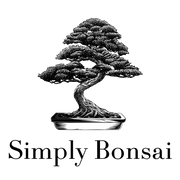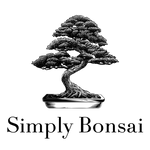Part 7 - Pests & Diseases
A pest is, in simple terms, an animal or plant that is detrimental to humans or human concerns. Whether they are attacking vegetables or bonsai, pests are well, pests! A pest follows a certain life-cycle, and you will notice that a certain pest is more prevalent at certain times of the year because of this. Pests will normally eat the fresh shoots of your tree, suck sap from the stems, or even eat the roots. They're really fun to have around... Luckily, there are solutions to these problems in the form of pesticides. If you'd rather go the organic route, there are many recipes available online for sprays and deterrents. Just be mindful that even some organic sprays can harm the bees and beneficial predatory insects.

Diseases, on the other hand, are generally caused by an infection from another infected plant. A disease is an impairment of the plant's normal state, this impairment can cause an interruption to the plant's vital functions such as photosynthesis and the other functions which prevent the ability to uptake nutrients. With proper care of your bonsai, you should rarely encounter any disease. Funnily enough, though, a pest or disease is natures way of telling you that the plant is weak. A strong plant will be able to fight off most diseases, but it has been known that plants which are deficient in certain nutrients are more susceptible to disease. This is the case with pests too, as they will often swarm on plants that are weak or have new growth.
A certain tree species will encounter its own series of issues. The Alberta spruce (below) has a dense growth habit. When left unchecked, you'll find all sorts of insects hiding in amongst the dense foliage. Junipers are susceptible to red spider mites in between their needles. Deciduous species such as Elm's and Maple's are often the target of aphids feeding on the new spring growth of the bonsai. Your best tool against pests and diseases is your careful observation. Once you see the early signs of an infestation then you can tackle it sooner. The first thing to do once you spot an issue with your bonsai is to research the pest or disease. Once you know what you're dealing with, you can begin to treat the issue.

Not a pest, but an interesting find!
Depending on where your bonsai is placed will have a massive impact on its resistance to pests and diseases. If you place your bonsai in an area of the garden that gets no airflow and no sunlight, then there is a large risk of mildew or other diseases developing. Keeping your maple bonsai near the greenhouse where you know an aphid infestation is taking place is also not a great idea. Keeping your bonsai in an ideal light position will keep a bonsai in peak health, which will help the bonsai fight off potential diseases.
As previously mentioned above, a trees ability to fend off pests and diseases is assisted by a strong immune system. In agriculture, farmers take notice of which plants are being damaged by certain pests and or diseases. Quite often, the few affected plants will be deficient in calcium or another key plant nutrient which has the lowered the plant's immune system. This lowered immune system makes it an ideal target for pests or diseases. So if your tree is a constant target for pests and diseases, you may want to look into the health of your bonsai. I.e. check how often you're watering, feeding, and if your bonsai is sitting in the right place.

The time of the year has a large influence on which pests and diseases you encounter in your garden. In winter, for example, if your Japanese black pine bonsai do not get adequate cold air movement, they begin to deteriorate and get diseases. In spring and summer, you will encounter the majority of pests and diseases. Although you're not safe during the colder months either! The key to beating a pest or disease is to know your enemy and to be observant. Aphids are prevalent in early spring, so it's best to spray deciduous trees in late winter through to mid-spring with an oil-based insecticide. Once you know the life cycle of a pest, or when certain diseases will occur, you'll be better prepared to fight off any issues. I'll mention it again, observation is key!
Key Points
- Observe your bonsai regularly so pests or diseases can be dealt with sooner rather than later.
- A healthy bonsai will fight off most pests and diseases, so make sure that your bonsai is getting adequate light, airflow, and isn't be over watered.
- Certain pests will be more prevalent at certain times of the year
- Different species of bonsai are susceptible to their own types of pests and diseases. Know your tree and know the enemy!


